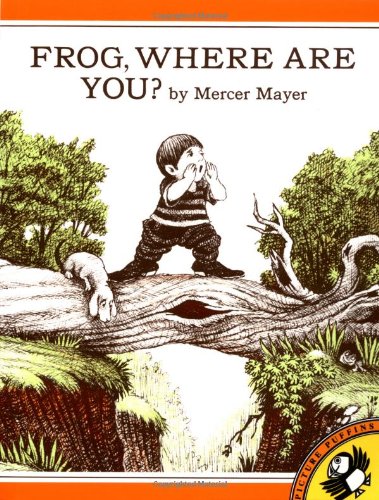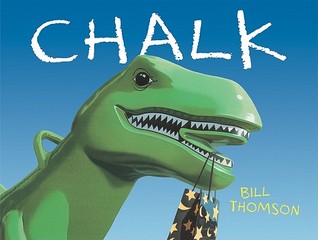Recently on the American Speech Language Hearing Association Early Intervention forum there was a discussion about the shift in several states pertaining to provision of language services to children in the early intervention system. Latest trend seems to be that a developmental interventionists (DI) or early childhood educators are now taking over in providing language intervention services instead of speech language pathologists.
A number of parents reported to SLPs that they were told by select DIs that “they work on same goals as speech therapists”. One parent, whose child received speech therapy privately with me and via EI kept referring to a DI’s as an SLP, during our conversation. This really confused me during my coordination of services phone call with the DI, since I was using terminology the DI was unfamiliar with.
Consequently, since a number of parents have asked me about the difference between DIs and SLPs I decided to write a post on this topic.

So what is the difference between DI and an SLP?
DI or a developmental interventionist is an early childhood education teacher. In order to provide EI services a DI needs to have an undergraduate bachelor’s degree in a related health, human service, or education field. They also need a certificate in Early Childhood Education OR at least six (6) credits in infant or early childhood development and/or special education coursework.
A DI’s job is to create learning activities that promote the child’s acquisition of skills in a variety of developmental areas. DI therapists do not address one specific area of functioning but instead try to promote all skills including: cognition, language and communication, social-emotional functioning and behavior, gross and fine motor skills as well as self-help skills via play based interactions as well as environmental modifications. In other words a DIs are a bit like a jacks of all trades and they focus on a little bit of everything.
SLP or a Speech Language Pathologist is an ancillary health professional. In order to provide EI services, in the state of NJ for example, an SLP needs to have a Masters Degree in Speech Language Pathology or Communication Disorders as well as a State License (and in most cases a certification from ASHA, our national association).
Unlike DIs, pediatric SLPs focus on and have an in-depth specialization in improving children’s communication skills (e.g., speech, language, alternative augmentative communication, etc.). SLPs undergo rigorous training including multiple internships at both undergraduate (BA) and graduate (MA) levels as well as complete a clinical fellowship year prior to receiving relevant licenses and certifications. SLPs are also required to obtain a certain number of professional education hours every year after graduation in order to maintain their license and certifications. Many of them undergo highly specialized trainings and take courses on specialized techniques of speech and language elicitation in order to work with children with severe speech language disorders secondary to a variety of complex medical, neurological and/or genetic diagnoses.
As you can see from the above, even though at first glance it may look like DIs and SLPs do similar work, DIs DON’T have nearly the same level of expertise and training possessed by the SLPs, needed to address TRUE speech-language delays and disorders in children.

What does this all mean to parents?
That depends on why parents/caregivers are seeking early intervention services in the first place. If they are concerned about their child’s speech language development then they definitely want to ensure the following:
- The child undergoes a speech language assessment with a qualified speech language pathologist and
- If speech language therapy is recommended, the child receives it from a qualified speech language pathologist
So if a professional other than an SLP assesses the child than it cannot be called a speech language assessment.
Similarly, if a related professional (e.g., DI) is providing services, they are NOT providing “speech language therapy” services.
They are also NOT providing the ‘SAME‘ level of services as a speech-language pathologist does.
Consequently, if speech language services are recommended for the child and those recommendations are documented in the child’s Individualized Family Service Plan (IFSP) then these services MUST be provided by a speech language pathologist, otherwise it is a direct violation of the child’s IFSP under the IDEA: Part C.
So how can parents ensure their child receives appropriate services from the get-go?
- Find out in advance before the assessment who are the professionals (from which disciplines) coming to evaluate your child
- If you have requested a speech-language evaluation due to concerns over your child’s speech language abilities and the SLP is not scheduled to assess, find out the reason for it and determine whether that reason makes sense to you
- Ask questions during the assessment regarding the child’s performance/future recommendations
- Make sure that an IFSP meeting is scheduled 45 days after the initial referral if the child is found eligible
- Find out in advance which professionals will be attending your child’s IFSP meeting
- Find out if any reports will be available to you prior to the meeting
- If yes, carefully review the assessment report to ensure that you understand and agree with the findings
- If no, make sure you have an adequate period of time to review all documentation prior to signing it and if need to request time to review reports
- If an SLP assessed your child but therapy services are not recommended find out the reason for services denial in order to determine whether you have grounds for appeal (child’s delay was not substantial enough to merit services. vs. lack of SLP availability to provide intervention services)
- If speech-language therapy services are recommended ensure that therapy initiation occurs in a timely manner after the initial IFSP meeting and that all missed sessions (by an SLP) are made-up in a timely manner as well

EI Service Provision in the State of New Jersey: DI vs. SLP
(from Service Guidelines for Speech Therapy in Early Intervention)
The following are the circumstances in which a DI will be assigned to work with the child instead of an SLP (vs. in conjunction with) in the state of NJ (rules are similar in many other states)
- If a child, under 28 months of age, presents with a “late-talker profile” (pg 27)
- If child with speech-language delays also has delayed prelinguistic skills (e.g., joint attention, turn-taking, etc), the DI will work with the child first to establish them (pg 29)
- If a child under 28 months has expressive language delay only and has intact cognition, receptive language, and motor skills
- If the child has a cognitive delay commensurate with a receptive and expressive delay (p 30)
- If a child has a hearing impairment and no other developmental delays, DI services will be provided while information is being obtained and medical intervention is being provided (pg 31)

Understanding who is providing services and the rationale behind why these services are being provided is the first important step in quality early intervention service provision for young children with language delays and disorders. So make sure that you know, who is treating your child!
Useful Resources:
- New Jersey’s Early Intervention System Your Child’s Development Important Milestones: (Birth – 36 months)
- Service Guidelines for Speech Therapy in Early Intervention
- The Early Intervention/IFSP Process
- Steps in the Early Intervention Process
- Procedural Safeguards for Families at Each Step of the EI Process
- What You Can Expect from Speech Therapy: A Guide for Parents

 If your child has been identified as having a language impairment, there are simple activities you can do at home that facilitate language development. These activities work in conjunction with your child’s formal therapy sessions and the activities he or she may participate in at school, either in the classroom or in an adjunct therapy session.
If your child has been identified as having a language impairment, there are simple activities you can do at home that facilitate language development. These activities work in conjunction with your child’s formal therapy sessions and the activities he or she may participate in at school, either in the classroom or in an adjunct therapy session. Erica L. Fener, Ph.D., is Vice President, Strategic Growth at
Erica L. Fener, Ph.D., is Vice President, Strategic Growth at 
 Recently I got yet another one of the dreaded phone calls which went a little something like this:
Recently I got yet another one of the dreaded phone calls which went a little something like this:















 Based on popular demand I created this 26 slide presentation to provide basic information regarding insurance coverage for common outpatient speech language assessment and therapy services. This handout contains important questions parents must ask when speaking to their insurance representatives regarding service coverage. It lists common pediatric diagnostic (ICD-9) and therapeutic (CPT) codes as well as discusses common service exclusions in policies. It also provides some suggestions on how to initiate appeals for denial of services and includes links to helpful resources parents can access to obtain further elaboration on the information provided in this presentation.
Based on popular demand I created this 26 slide presentation to provide basic information regarding insurance coverage for common outpatient speech language assessment and therapy services. This handout contains important questions parents must ask when speaking to their insurance representatives regarding service coverage. It lists common pediatric diagnostic (ICD-9) and therapeutic (CPT) codes as well as discusses common service exclusions in policies. It also provides some suggestions on how to initiate appeals for denial of services and includes links to helpful resources parents can access to obtain further elaboration on the information provided in this presentation.